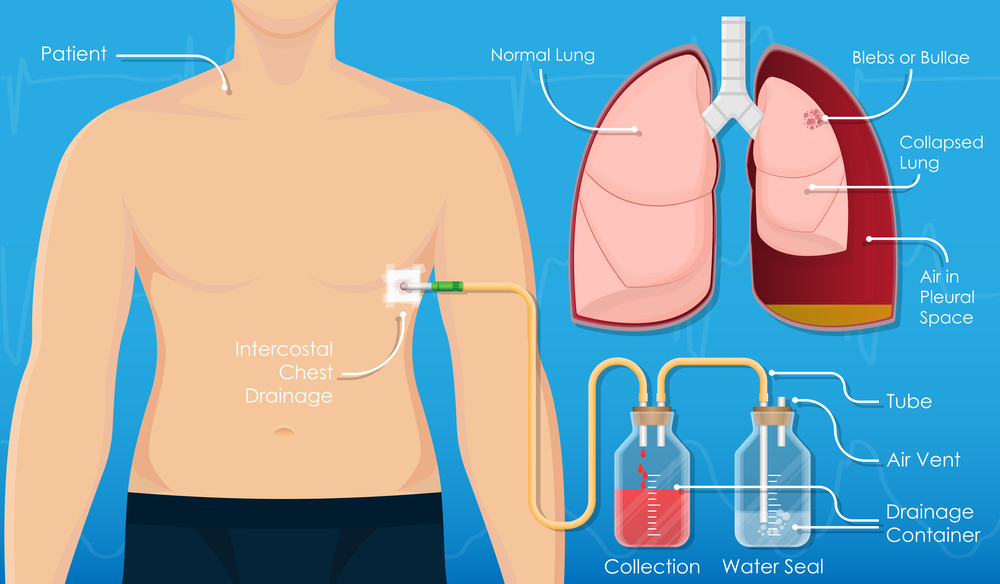
A chest drain procedure (or pleural drain procedure) drains air, blood or fluid through a tube that is inserted into the space surrounding your lungs, called the pleural space.
Why do I need a chest drain?
Fluid or air can build up in the pleural space after surgery or when there is inflammation, infection or a traumatic injury to the lungs. Sometimes, air can build up quickly for no clear reason. This is known as a spontaneous pneumothorax.
You may need a chest drain if you have any of the following conditions:
- Bleeding around your lung due to recent trauma (eg car accident)
- Collapsed lung – called a pneumothorax
- Fluid build up due to a condition such as cancer or pneumonia - called a pleural effusion
- Fungal infection.
You may also need a chest drain before or after lung surgery.
What happens during a chest drain procedure?
During a chest drain procedure:
- You will be lying on a bed, slightly up and to the side, with one arm raised above your head (sometimes you may be positioned sitting upright and leaning forward)
- Your doctor will clean the area where the tube will be inserted
- You will be given a local anaesthetic to numb the area
- The doctor will make a small cut between the ribs. The cut is usually made between the 5th and 6th rib - in line with the nipple, and slightly in front of the armpit on the affected side
- The doctor will then, very gently, guide a plastic tube into the pleural space
- The doctor may apply a stitch and dressing to keep the tube in place
- The tube will be attached to a one-way drainage system that only allows air and fluid to flow out from the pleural space to help expand your lung
- When all excess fluid or air is drained from the pleural space, and the lung is fully expanded, the tube can be removed.
The chest tube usually stays in for a few days – during this time, you will remain in the hospital. Sometimes your drain will be attached to suction on the wall which may limit your movement away from your bed.